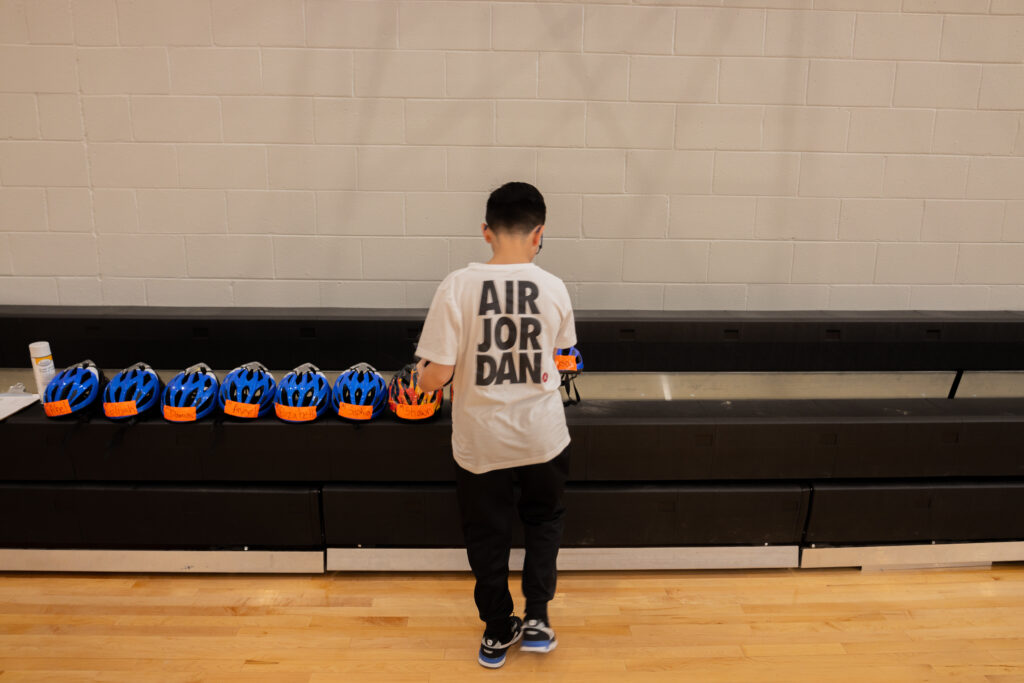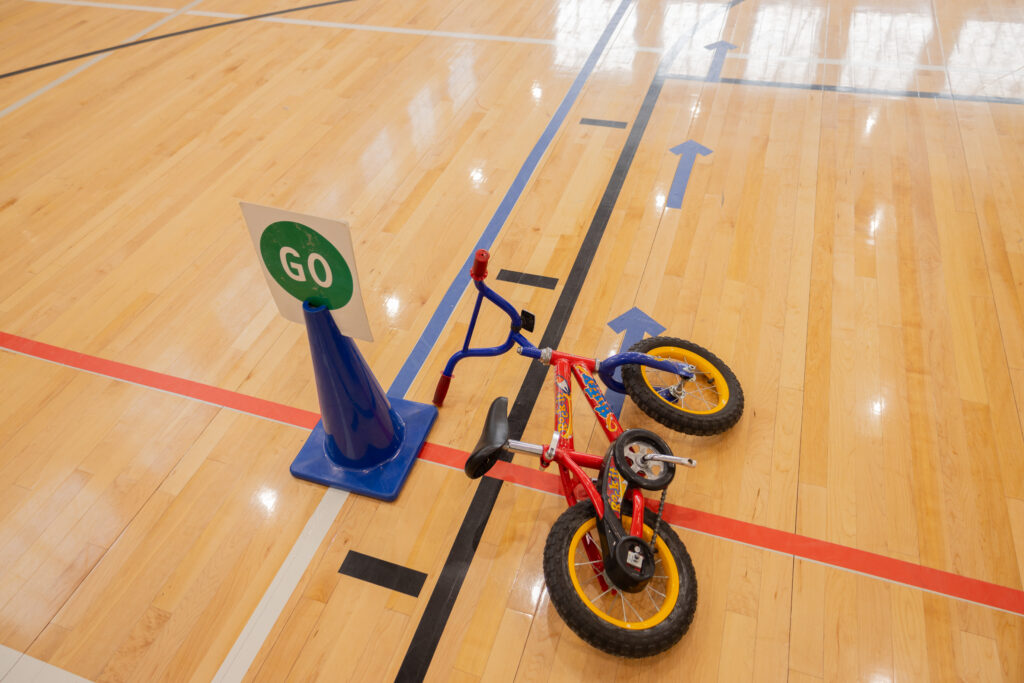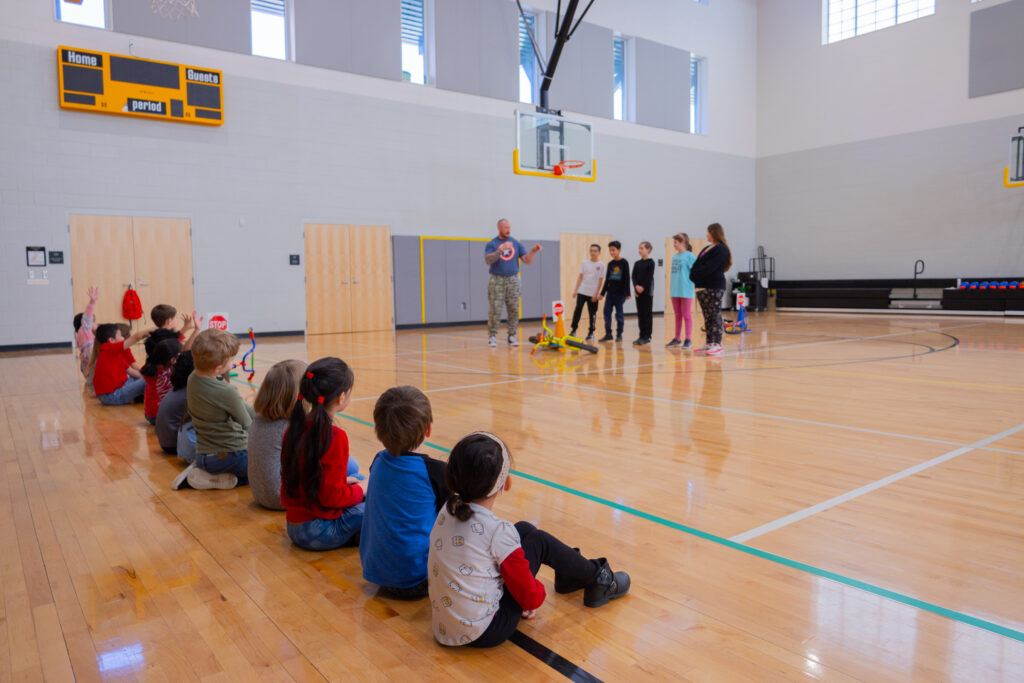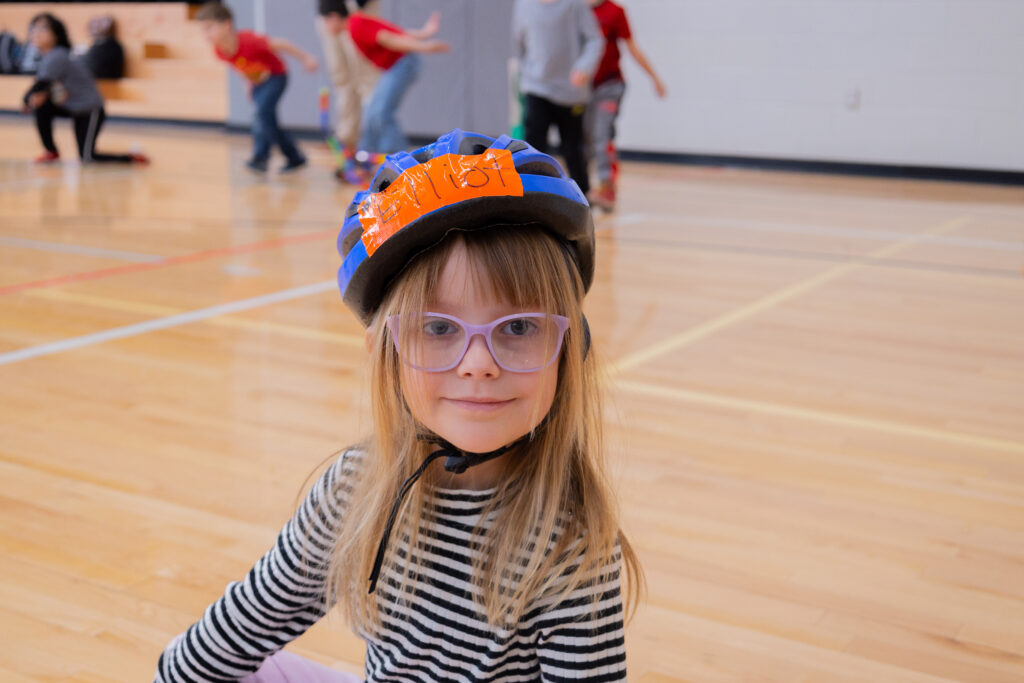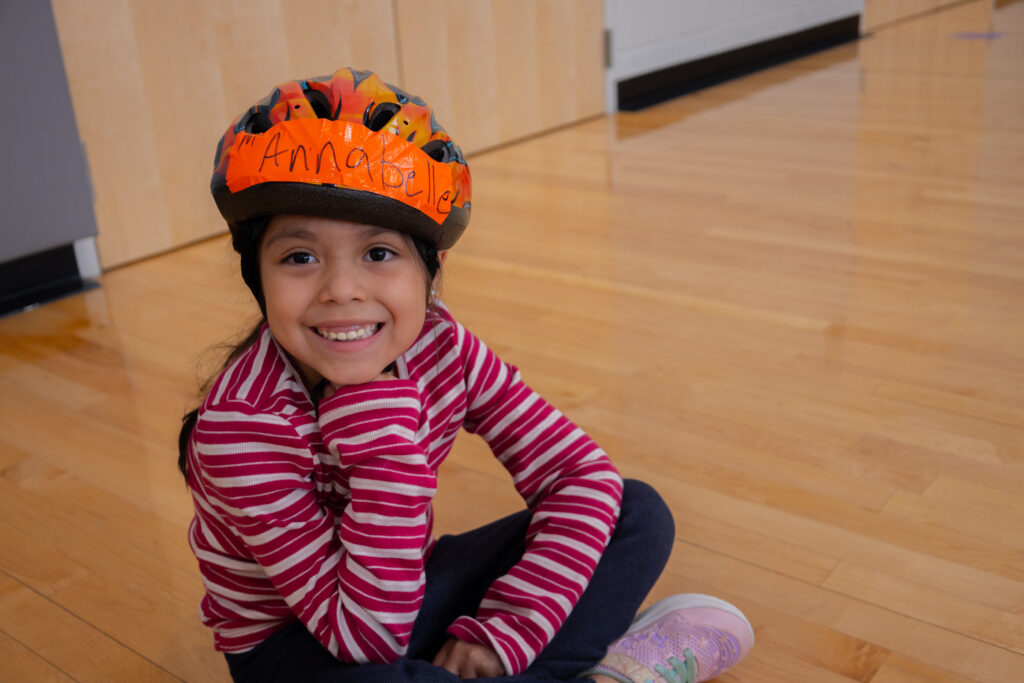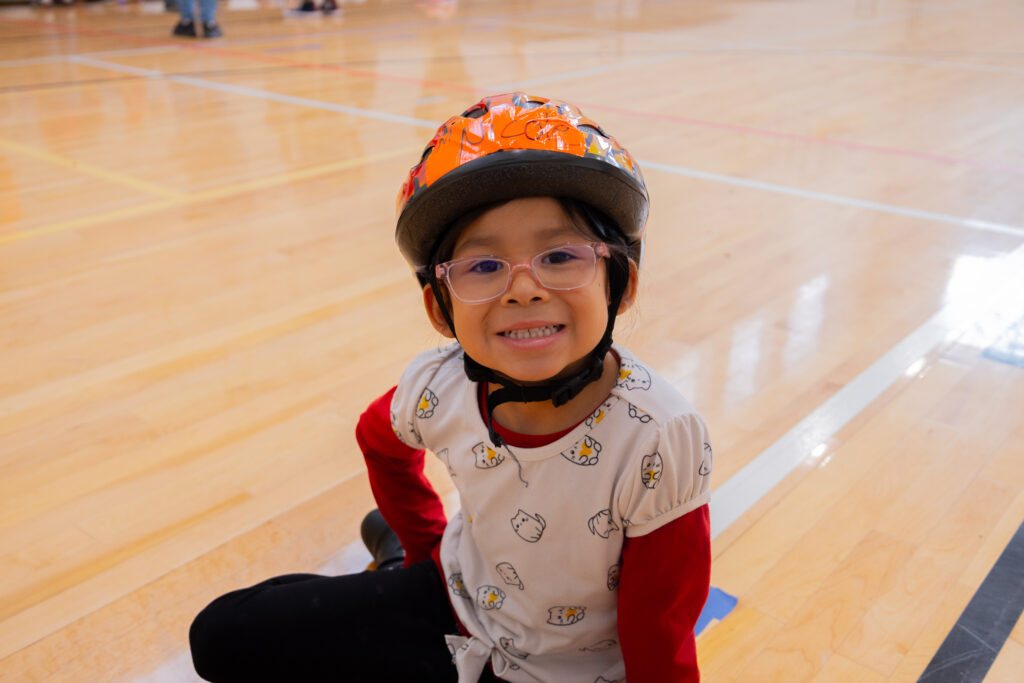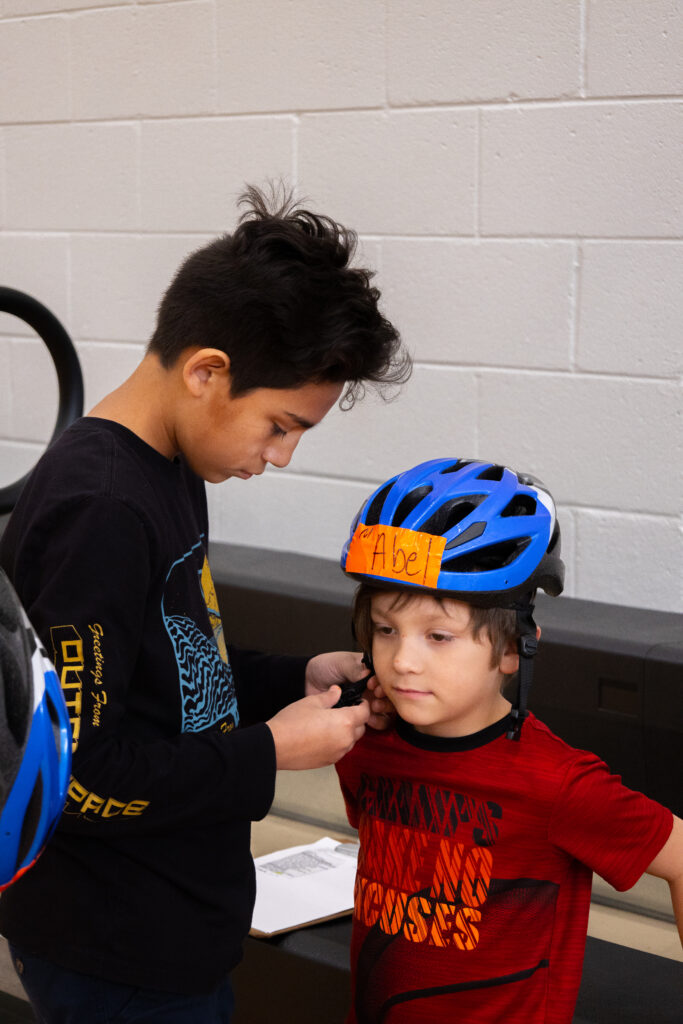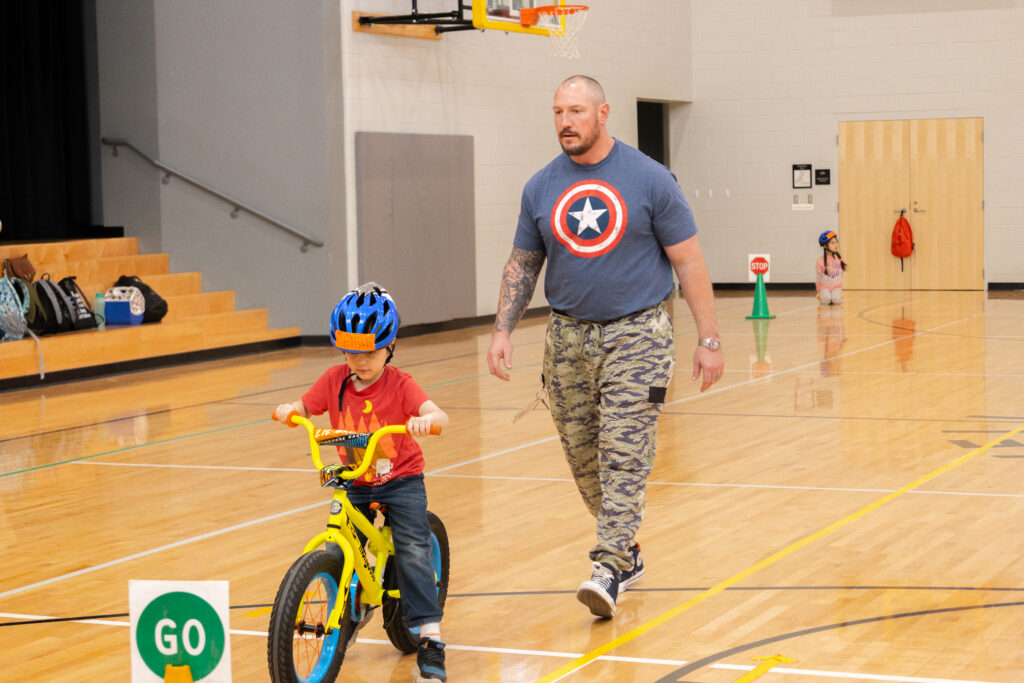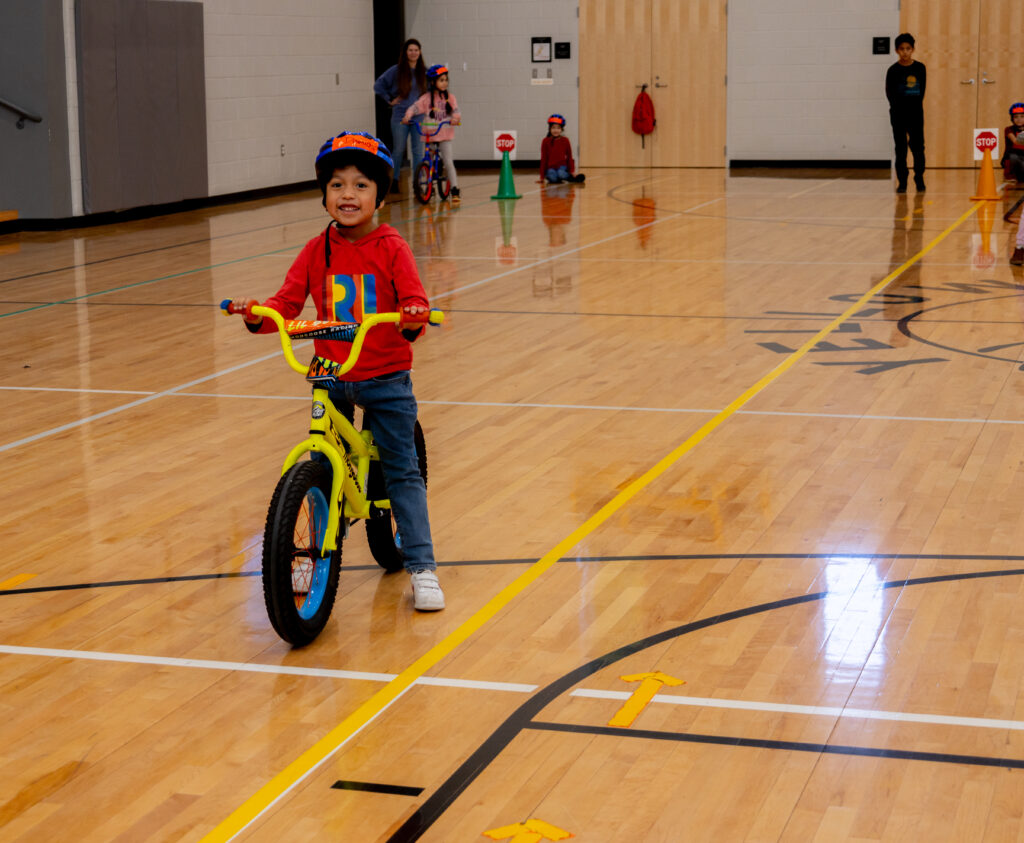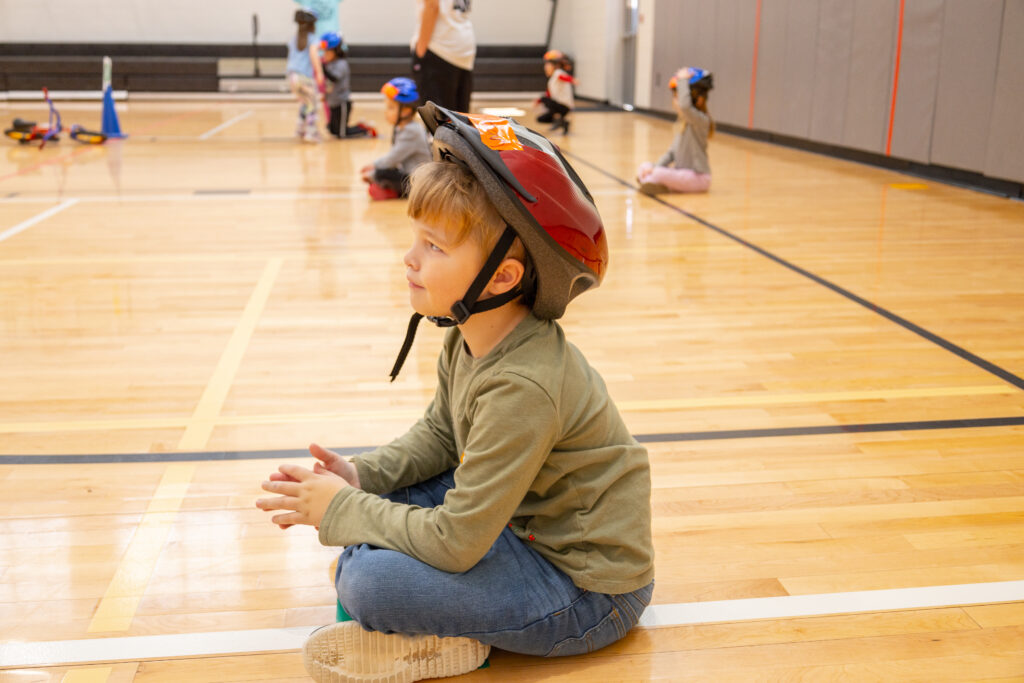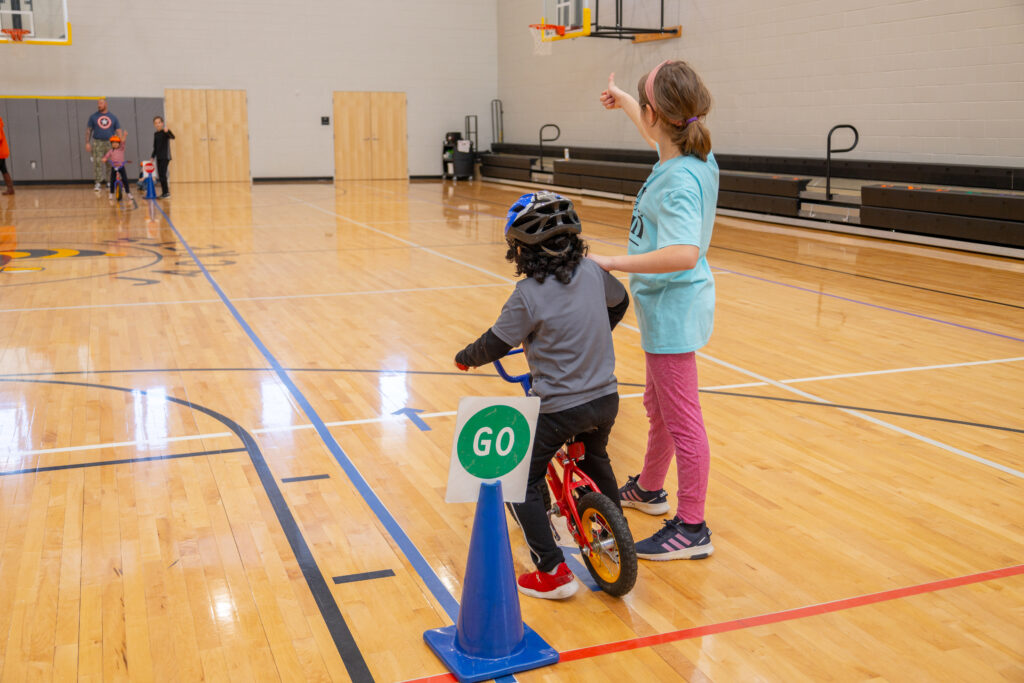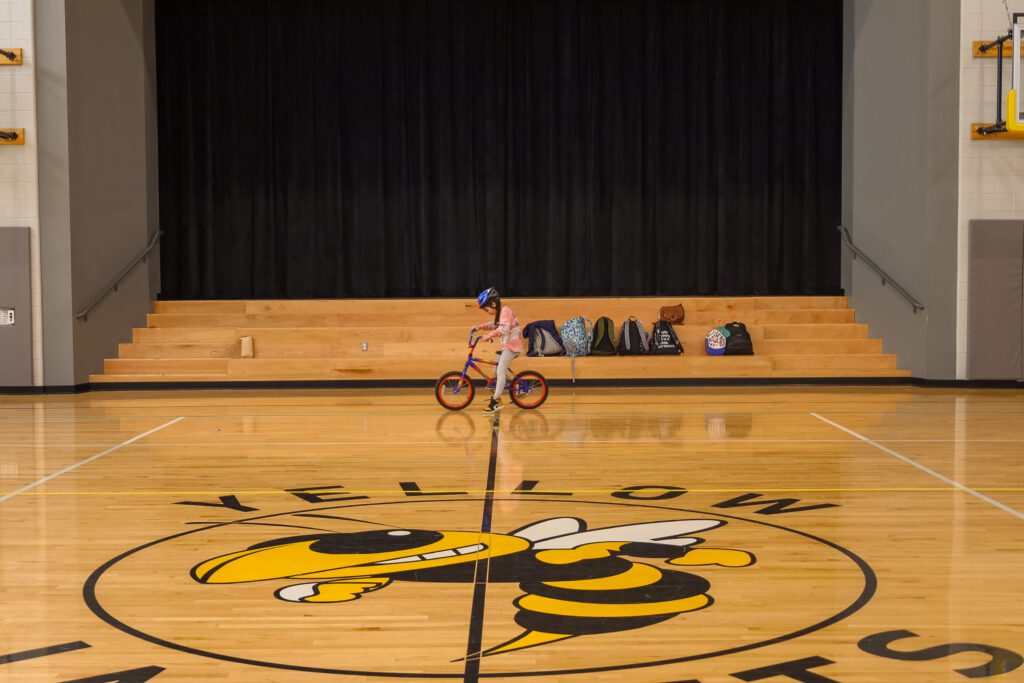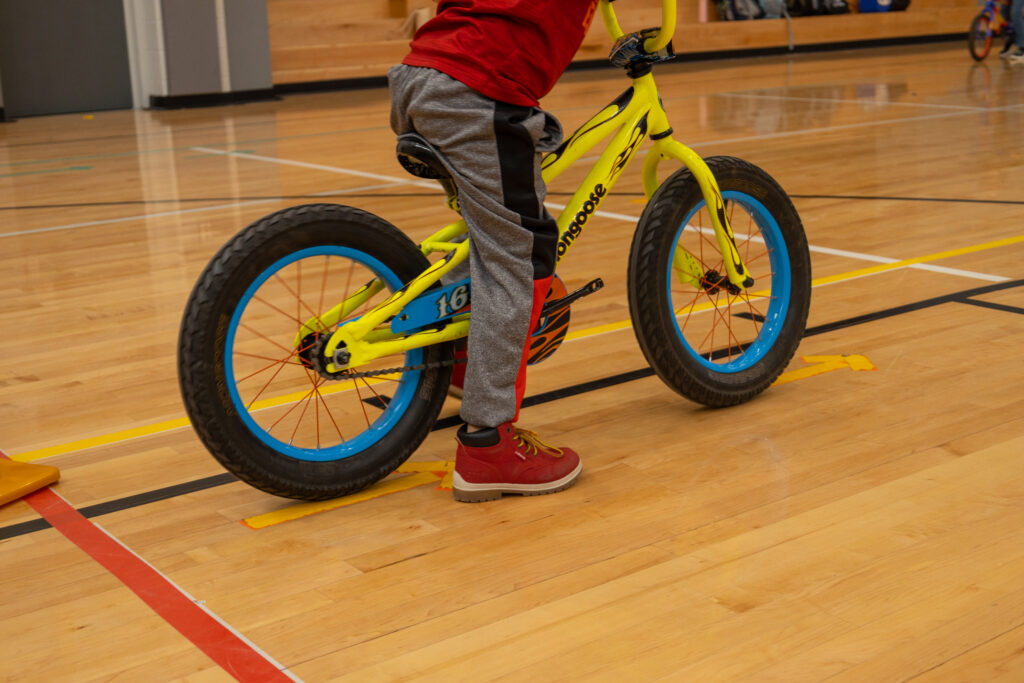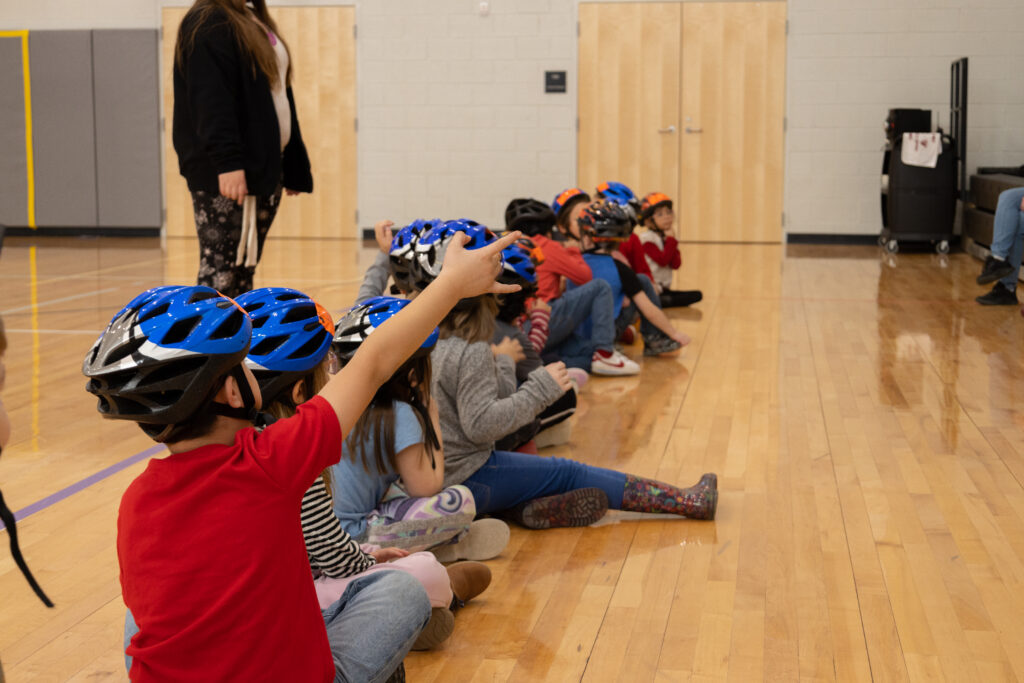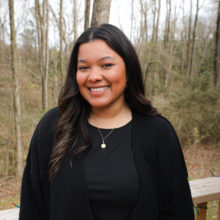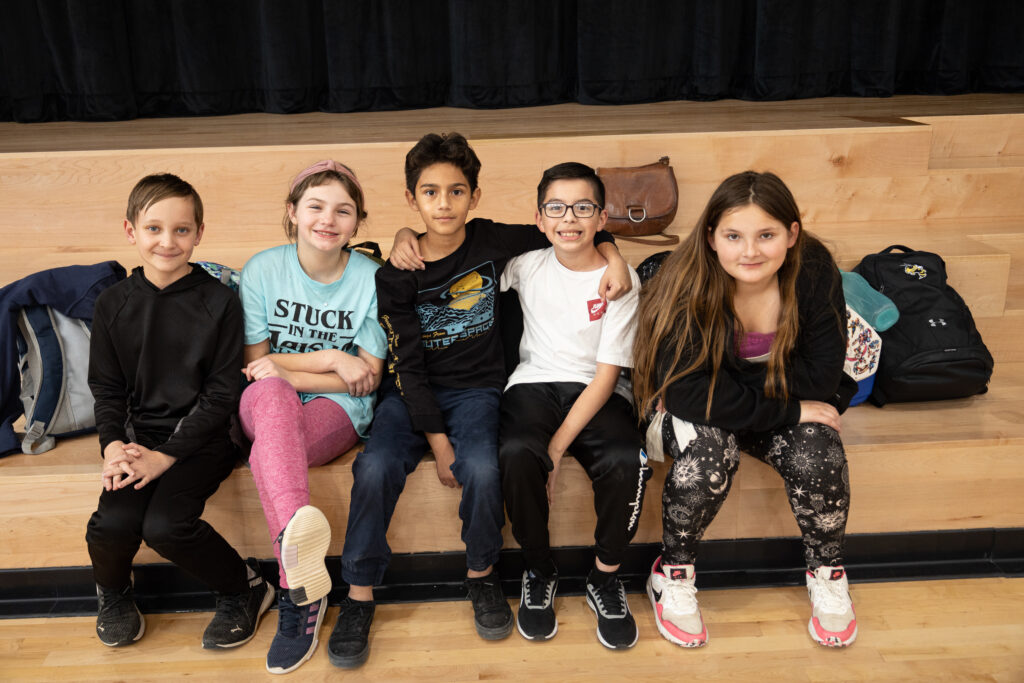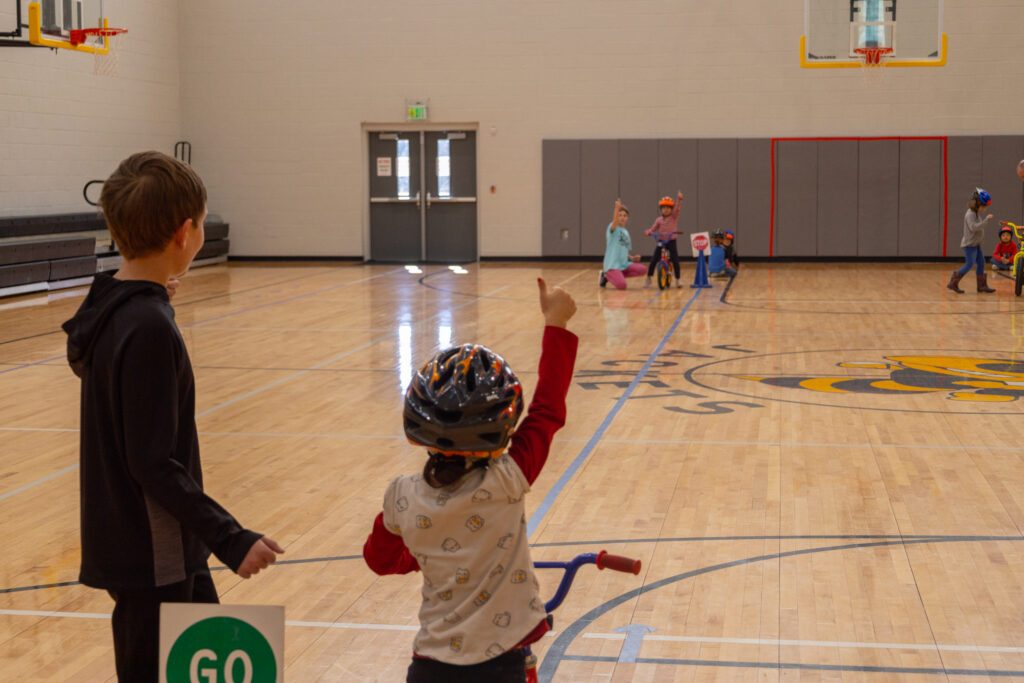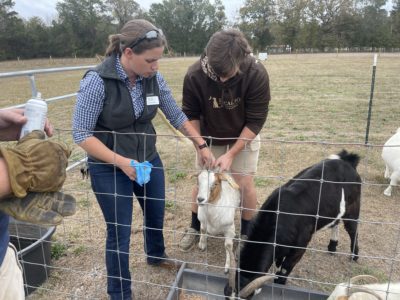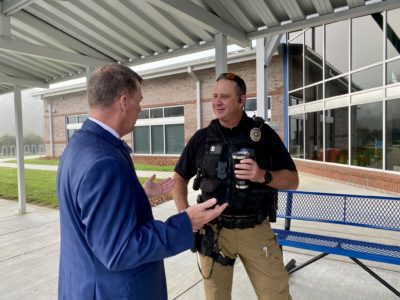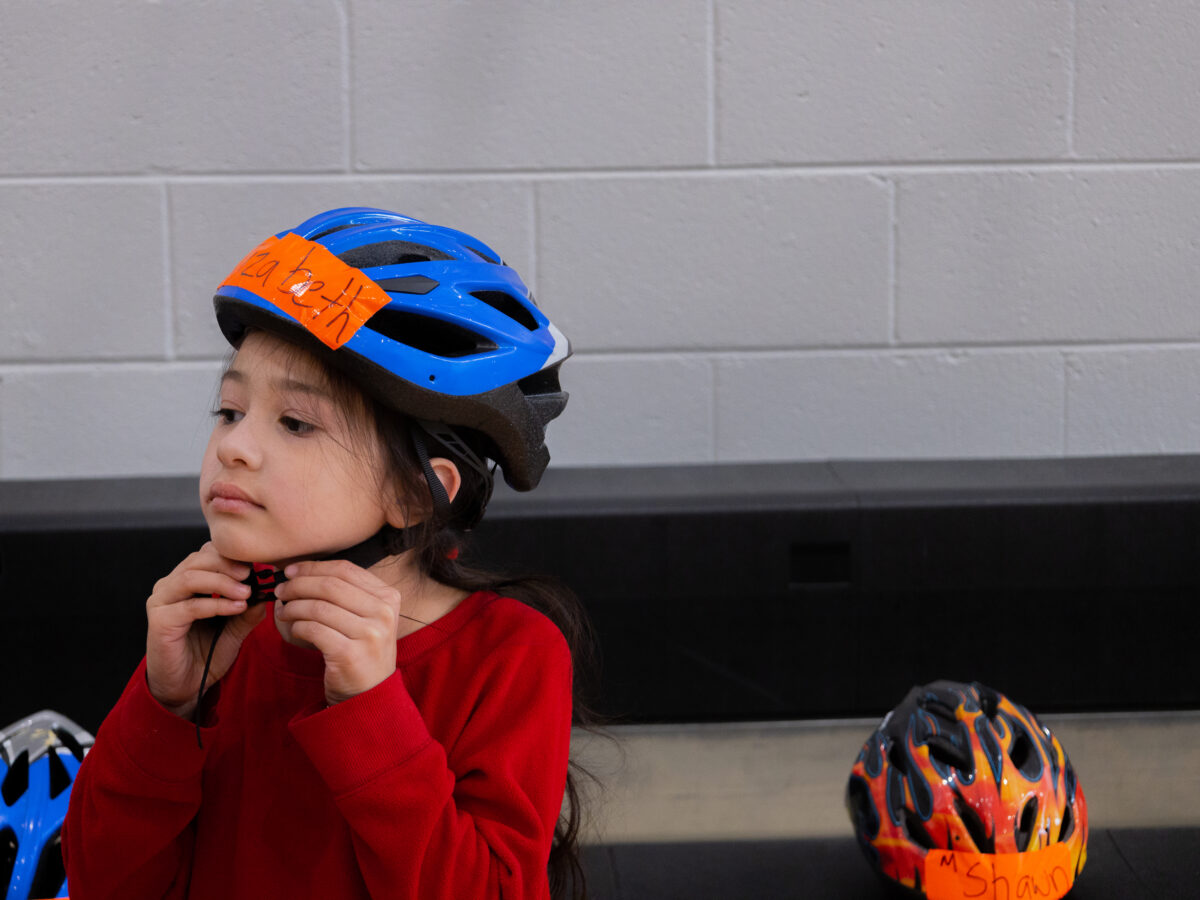
|
|
If you walk into the gym at Edneyville Elementary School in Henderson County, you may not notice much out of the ordinary. There are bleachers, a small stage area, and basketball hoops.
But, if you look closer, there are different colored lines taped across the gym, with arrows pointing in opposite directions.
These are what Dustin Young calls “roads.”
For more than 10 years, Young, Edneyville’s physical education teacher, has conducted Edneyville Tikes on Bikes – a program designed to teach kindergartners in the school how to ride a bike.
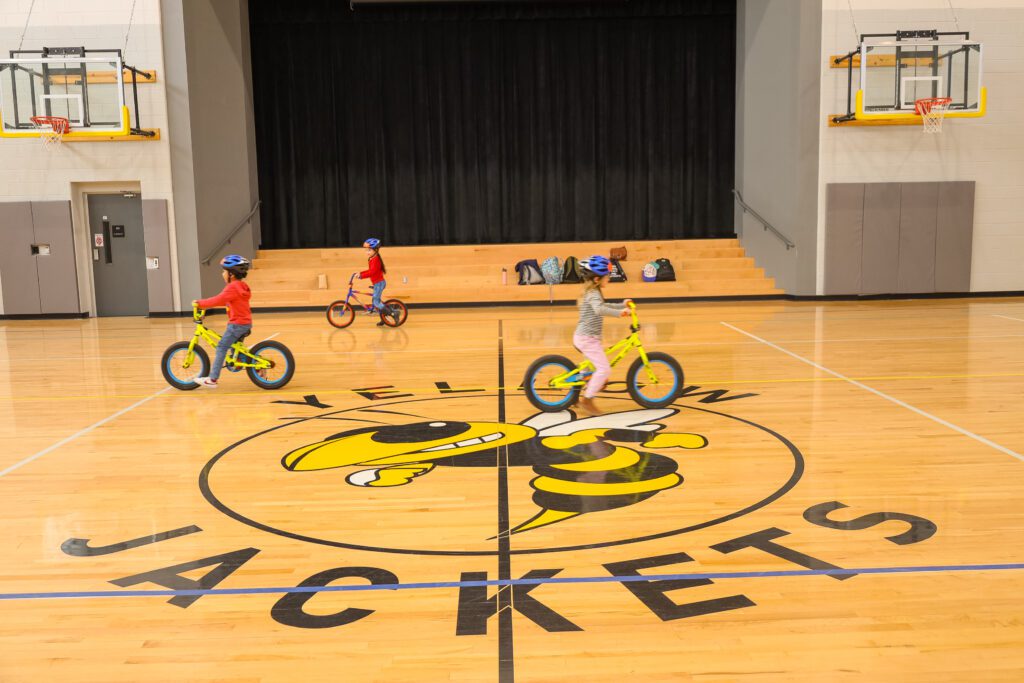
How the program works
When Young joined the staff at Edneyville Elementary School, the program had already been underway at the school for a few years. But over the past 11 years, Young has tweaked and modified the program to make it his own.
Young said the program — designed for kindergartners — allows him to help strengthen their coordination, balance, and other skills.
“We’re starting at a young age. There’s only a handful of kids that I get every year that actually know how to ride a bike without training wheels,” Young said. “So the end goal is to get a lot of them riding without training wheels throughout the duration of the program.”
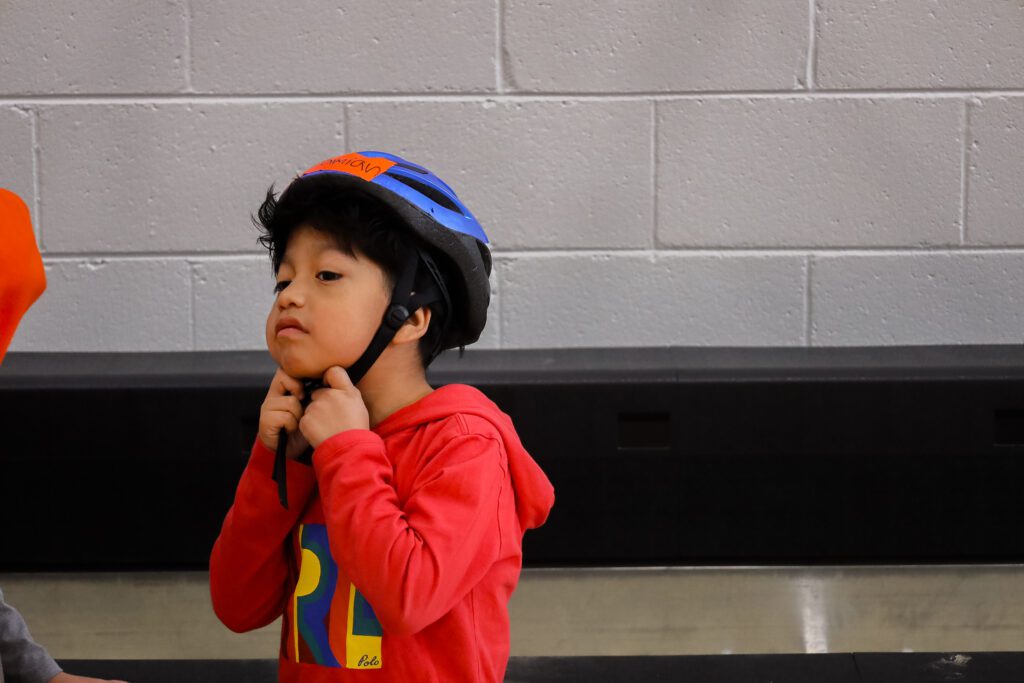
When Young begins the program each year, there’s a lot to learn before the bike riding begins. He starts by helping students get acclimated to the “roads” and rules.
The kindergartners run and walk the “roads” that they’ll eventually travel on their bicycles. They learn how to put their helmets on properly. They even learn how to “park” – which is where students sit while they wait their turn.
Students never use training wheels. Instead, Young removes the pedals from the bicycles, lowers the seats, and turns them into “balance bikes.”
“Now they’re just going to use their legs to drive the bike and get familiar with that balancing and coordination part of it,” Young said.
Young sets up various “roads” in the school’s gym – color-coded by the size of bike students will use. Students learn to stay on their side of the “road” and to stop at stop signs. Each new skill that students learn is practiced for a few weeks before Young moves on to the next. Collectively, the program runs for about three months.
“The whole goal is to try to get kids balancing so well, they’re almost running and taking their feet up and coasting,” Young said.
Young uses a variety of techniques, including methods called “duck walking” and “gliding”. He demonstrates those skills for students in today’s class. pic.twitter.com/sqUd09299E
— Cheyenne McNeill (@chey_mcneill) January 24, 2023
This is a skill that Young calls gliding. It’s the second major skill he teaches students before they actually start riding the bike. He encourages students to increase their speed to help them acclimate to the speed of the bicycle once he attaches the pedals again.
Throughout the 50-minute class period, Young can be heard encouraging students, “You can go faster!”
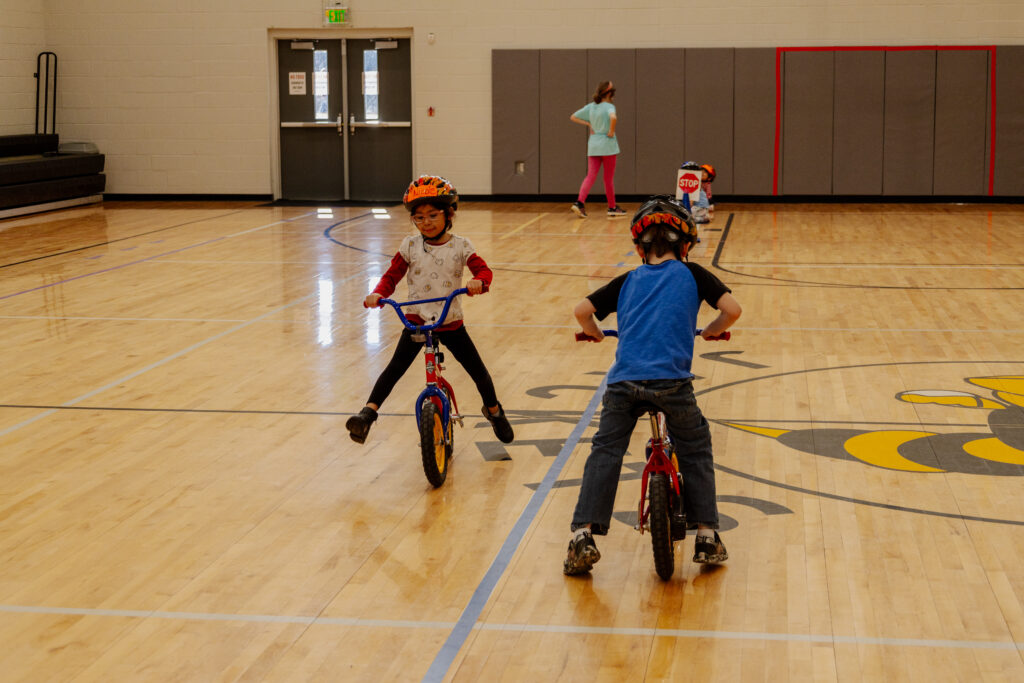
This prepares them to do what Young has dubbed “advanced gliding.” He places the pedals and seats back on the bikes and students practice maneuvering the bike while walking it with the tips of their toes.
In this instance, Young says peer pressure can be the best thing to motivate students.
“When you see your best friend taking their feet up, you kind of want to do it and then move forward to the next step in the program,” Young said.
Not every student leaves 100% knowing how to ride a bicycle without training wheels. But, almost as importantly, they leave with the skills needed to learn at home.
“Even the ones that don’t quite get it, they have the tools. They have the knowledge. Their bodies are trained so they eventually get it,” Young said.
Often, Young hears from parents in a few months that students are riding their bikes without training wheels.
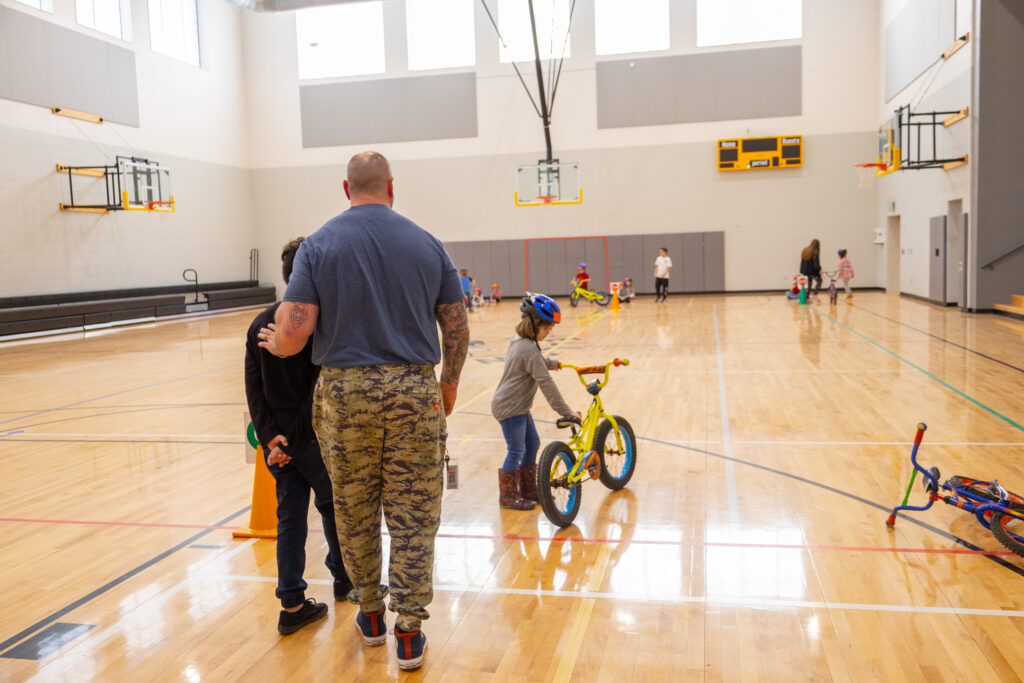
Training leaders in the classroom
Young’s not conducting the program alone. Year after year, plenty of parents and family members help with the program. But, for the past four years, Young has had the help of a special group of fifth graders – his bike squad – who come in and act as bike helpers.
Edneyville Elementary School is a Leader in Me school, which is a program based on Dr. Stephen Covey’s “Seven Habits of Highly Effective People.”
The bike helper role is one of many school-wide leadership roles that students can participate in through the Leader in Me program. According to Kayla Castro, the school’s coordinator, the program helps students take ownership of their learning.
“Students, to me, are more responsible for their own learning. They learn that their choices are what is going to get them what they want,” Castro said.
There are various leadership roles that students can participate in across campus. Earning a role sometimes includes an application, recommendations from teachers, and an evaluation of students’ behavior.
Bike helpers assist Young in setting the gym up, getting helmets and bicycles out of storage, helping kindergartners transition, and providing encouraging words and support.
Emelia Witzke is a fifth-grade bike helper. She says seeing the kindergartners get the hang of the skills makes her job fun.
She said, “I honestly kinda like it when they just go, ‘Oh, I know what to do now!’”
Witzke, along with another bike helper, Kaiden McDavid, has created a system. They give each other a signal from across the gym – a thumbs up – and then send the next student along. They prompt the kindergartners to encourage each other when they meet in the middle of the gym.
Sending students off
While it’s true that every student may not complete the program knowing how to ride a bike without training wheels, Young says there is typically a significant number that do. In addition to a certificate of completion that all students receive, Young gives a special certificate to students who learn how to ride a bike without training wheels.
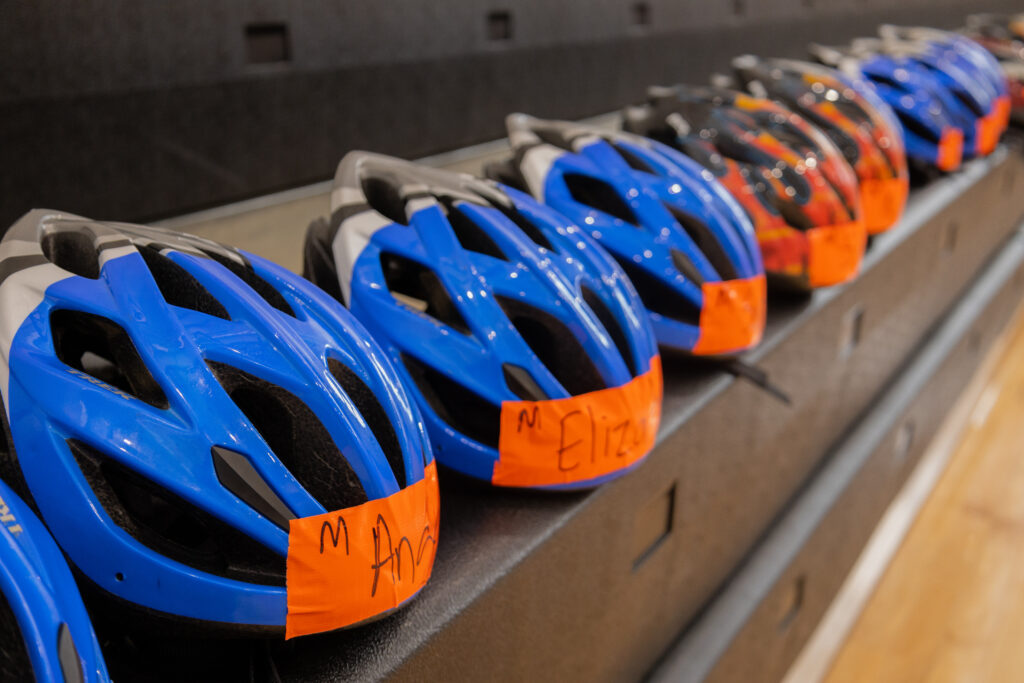
For the past two years, Young has received a grant from the N.C. Department of Transportation Bicycle Helmet Initiative. Through this initiative, Young was granted 100 helmets and was able to distribute a helmet to every kindergartner upon completion of the program. Young thinks of this as a sort of “trophy” for students to receive after completing the program.
He also uses this as an opportunity to collaborate with the community. For the past two years, Young has had representatives from the local fire department and sheriff’s department help distribute helmets.
Now, teachers from other schools in the district are interested in starting the program at their schools, and Young is helping them get started.
At the conclusion of the 50-minute class period, Young yells out “Ladies and gentlemen…” and receives a response of “we are out of time!” from the kindergartners.
